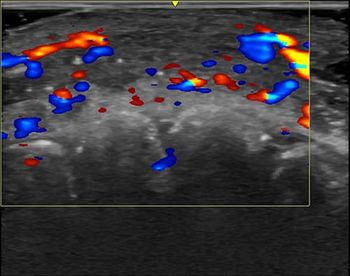
CT colonography performs well with children
Pediatric patients presenting with suspected polypoid lesions of the colon can safely undergo low-dose virtual colonoscopy, according to a study published in the July issue of the European Journal of Radiology. Success of the diagnostic technique may have implications for adult screening.
Pediatric patients presenting with suspected polypoid lesions of the colon can safely undergo low-dose virtual colonoscopy, according to a study published in the July issue of the European Journal of Radiology. Success of the diagnostic technique may have implications for adult screening.
Pediatricians and surgeons at the Diagnóstico Maipú center of the San Isidro district of Buenos Aires, Argentina, held valid concerns about standard diagnostic procedures for colonic triage in symptomatic children. Younger children had voiding problems after barium enemas, while many others proved uncooperative during optical colonoscopy.
The sedation times needed for colonoscopy only added to the equation. Physicians needed an exam that was just as accurate and safe, but faster, said principal investigator Dr. Carlos María Capuñay, a radiologist at Diagnóstico Maipú.
"Since we had already tried virtual colonoscopy on over 1000 adults, we thought we could try a low-dose version in kids," Capuñay said. "We developed and tried the new protocol in a set of patients from one-month-old babies to 14- and 15-year-old adolescents."
Capuñay and colleagues enrolled 100 pediatric patients presenting with rectal bleeding. Patients with colonic symptoms unrelated to oncologic disease from rectal pain, abdominal distention, abdominal pain, or diarrhea and those subjected to sexual abuse were excluded from the study.
The researchers sought to detect elevated lesions of the colon using both virtual and optical colonoscopy. They found CT colonography could accurately detect these lesions with a low radiation dose, in less time than did optical colonoscopy.
They detected 86 lesions with CT colonography and 80 using optical colonoscopy. Virtual colonoscopy-detected lesions included 70 true positives, 48 true negatives, 12 false positives, and eight false negatives. Overall sensitivity, specificity, positive- and negative-predictive values for virtual colonoscopy were 89%, 80%, 85%, and 85%, respectively. Sensitivity and specificity for lesions smaller than 5 mm and larger than 9 mm were, respectively, 81% and 90%, and 100% and 96%.
All patients underwent standard bowel cleansing the day before examination and CT colonography and colonoscopy the same day. The imaging protocol for CT included four-slice scanning in supine and prone position with 2.5-mm slice thickness, 1.3-mm reconstruction intervals, 15 mAs to 30 mAs and 90 kVp, with 3.2-mm collimation.
Acquisition time ranged from five to 12 seconds, depending on the patients' size.
"We specifically wanted to reduce or eliminate the need for sedation, which we achieved using this technique," Capuñay said.
Researchers dismiss the idea of using CT colonograpy for pediatric screening since colonic pathology in these patients is rare, and concern for radiation exposure in children is high. This successful low-dose technique, however, could carry implications for adult colon cancer screening, Capuñay said.
"Although our standard protocol for adults entails 100 mAs or more, we think that in the proper clinical context we could utilize doses of 50 mAs or less in adults," he said.
For more information from the Diagnostic Imaging archives:
Newsletter
Stay at the forefront of radiology with the Diagnostic Imaging newsletter, delivering the latest news, clinical insights, and imaging advancements for today’s radiologists.




























